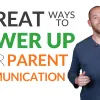Messaging & Announcements
Klassly

Friendly, free tool for school-to-home communication facilitates connection
Bottom Line: This versatile platform offers lots of possibilities for classroom management and keeping caregivers in the loop if teachers create meaningful posts and interactions.
Classting
Share files, photos, videos with simple caregiver communication platform
Bottom Line: A simple, practical tool for fostering communication between home and school.
LivingTree Engage

Home-school messaging best for organizing events, simple communication
Bottom Line: This free tool has the basic pieces of a group messaging platform but lacks some fancier bells and whistles.
ParentSquare

Versatile communication tool fosters parent involvement
Bottom Line: Helps schools comprehensively streamline communication between school staff and families.
Remind

Messaging platform offers tight focus on school-to-home connection
Bottom Line: Well-designed, highly effective messaging tool delivers on its promise to connect home and school.
TalkingPoints
Multilingual messaging tool enhances school-to-home communication
Bottom Line: Easy-to-use tool for supporting communication and engagement with families in 150+ languages.
ClassDojo
Exemplar bridge between home and school also aids learning
Bottom Line: When used thoughtfully, ClassDojo can help adults support students' growth through goal-setting, reflection, and celebration.
Bloomz
Effective district-wide communication platform for school and home
Bottom Line: This multifunctional platform provides many ways for districts, admins, teachers, families, and students to connect and offers a ton of features—perhaps even too many, for some.
ClassTag
Flexible, user-friendly tool gets teachers and families in sync
Bottom Line: Practical communication options allow teachers to effectively communicate classroom happenings and needs to families.
Athena's Workshop

Texting platform for students, parents, has extra classroom features
Bottom Line: With creative use, this robust platform could help close the gap between in- and out-of-classroom learning.

Smart classroom tool if used with care; priceless for PLNs
Bottom Line: Twitter offers something for everyone: information, resources, and an easy way to connect with just about anyone.
Portfolio Tools
Seesaw

Versatile digital portfolio appeals to teachers, students, and parents
Bottom Line: A powerful multimedia learning and communication tool that demonstrates student progress over time.
FreshGrade Classic
A fresh way to capture, document, and share student learning
Bottom Line: Multimedia documentation tools and a customizable grade book help communicate learning and expand both summative and formative assessment.
Bulb

Slick portfolio tool has cool features, limited feedback options
Bottom Line: A neat tool for publishing online, possibly better suited to teacher content creation than student publishing.
Websites & Class Blogs
Edublogs

Encourage student expression and maintain digital portfolios with easy-to-use blog creator
Bottom Line: Edublogs is a fantastic platform for any teacher committed to providing consistent opportunities for creation and reflection.
Weebly
Easy-to-use website design tool lets teachers monitor kids' creations
Bottom Line: Teacher-monitored sites and drag-and-drop elements make attractive website design safe and accessible for students.
Blogger

Versatile, easy-to-use blog platform best used with teacher guidance
Bottom Line: With teacher support and guidance, motivated kids will find this easy-to-use and eye-catching platform a fun place to share their voices.
Google Sites

Make your own website with easy, intuitive drag-and-drop features
Bottom Line: With a few clicks, students can design a basic but custom, responsive website that allows for easy collaboration with their peers.









